#Mariner
Explore tagged Tumblr posts
Text


Star Trek Celebrations (2024)
Art by Kevin Wada
#Comics#IDW#Kevin Wada#Star Trek Celebrations#Star Trek Lower Decks#Mariner#Science Fiction#Gay#Lesbian#Art#Original Art#Before And After#Women Of Trek#2024#2020s#20s#Lower Decks
1K notes
·
View notes
Text

i’m already emotional
#jamesdotmp3#star trek#art#star trek lower decks#my art#lower decks#beckett mariner#samanthan rutherford#dvana tendi#brad boimler#mariner#boimler#tendi#rutherford#st ld#st lwd#star trek fanart#fanart#GUYS I’M NOT READY
792 notes
·
View notes
Text





humans are so weird when they see something that defies their perception of biology and technology
poll PLEASE VOTE
#transformers#star trek#my art#illustration#digital art#mtmte#transformers mtmte#tf mtmte#idw mtmte#mtmte rodimus#idw transformers#lost light#tf idw#mtmte megatron#lower decks#star trek lower decks#star trek ld#lwd#mariner#captain freemen#im coping with the fact that both of these series wont get more content
502 notes
·
View notes
Text

Ectoberhaunt24
Day 13: Isekai: Old Hero, New World
Strange New World Crossover with Lower Decks Crossovered with Danny Phantom. Yeah it's a lot but how could I not do this when the prompt begged for me to do it.
#danny phantom#Star Trek#star trek lower decks#star trek strange new worlds#strange new worlds#lover decks#Time portal#hijinx#Christopher pike#laan noonien singh#mariner#brad boimler#those old scientists#LLAP
399 notes
·
View notes
Text

Hello, this is my application to the Star Trek Lower Decks fandom. I can make doodles, and laugh really, really stupidly hard. Please accept this art offering. Thank you for your consideration.
#star trek#star trek lower decks#lower decks#mariner#boimler#ensign mariner#ensign boimler#new brain rot moment#its all i ever wanted in a space show
3K notes
·
View notes
Text

LOWER DECKS LOWER DECKS LOWER DECKS!
#lower decks#star trek lower decks#beckett mariner#mariner#art block is a bitch#but lower decks saved my life#no joke#also college has been brutal#0/10 would not recommend
302 notes
·
View notes
Text



some besties skeches for the new lwd season!!! (+ a small au where they get stuck in the snw crossover ep)
#star trek lower decks#lwd#beckett mariner#bradward boimler#mariner#boimler#star trek lwd#orig#sorry for Not Posting. i maybe died (burned out)
278 notes
·
View notes
Text

Ko-Fi Doodle : T'Lyn & Mariner [Patreon | Commissions]
#T'Lyn#Mariner#lower decks#st lower decks#star trek lower decks#bee doodles#don't listen to Boimler - they won spin the bottle
260 notes
·
View notes
Text
I feel the need to clarify about the new Garashir confirmation:
The Garak and Bashir in question are from two different universes.
Garak is from an alternate universe where his cover was as a doctor instead of a tailor.
Bashir is from OUR universe and is the EMH for the ship that they’re on.
Not only do they brag about how they still found each other despite such small probability (love persevering) but the ENTIRE theme of the episode was how a friendship/connection/trust/bonds can transcend the mere variables that made you meet them in your own universe (love and trust persevering)
#lwd#lower decks#elim garak#julian bashir#garashir#boimler#bradward boimler#mariner#becket mariner#beckett mariner
175 notes
·
View notes
Text
My husband made an observation yesterday that Mariner and Boimler are the two different types of Star Trek fans. Boimler is the fan who knows all the lore and has the whole of Memory Alpha memorized. Mariner is the fan who’s like “FUCK YEAH Star Trek is AWESOME!” every time Kirk sucker-punches someone and makes “pew pew” noises while pretending to shoot people with a phaser.
2K notes
·
View notes
Text




894 notes
·
View notes
Text

T’lyn and Mariner!
#star trek#star trek lower decks#lower decks#st lwd#st lower decks#mariner#beckett mariner#t’lyn#mari'lyn
363 notes
·
View notes
Text
Mariner program
The Mariner program was conducted by the American space agency NASA to explore other planets. Between 1962 and late 1973, NASA's Jet Propulsion Laboratory (JPL) designed and built 10 robotic interplanetary probes named Mariner to explore the inner Solar System - visiting the planets Venus, Mars and Mercury for the first time, and returning to Venus and Mars for additional close observations.
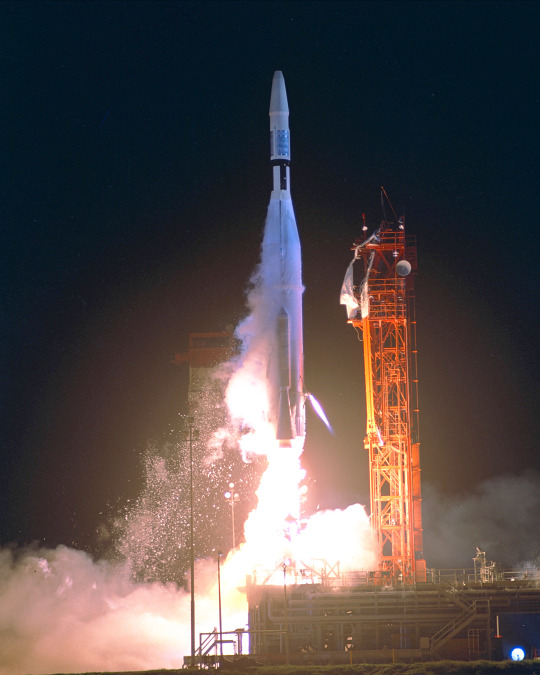
The program included a number of interplanetary firsts, including the first planetary flyby, the planetary orbiter, and the first gravity assist maneuver. Of the 10 vehicles in the Mariner series, seven were successful, forming the starting point for many subsequent NASA/JPL space probe programs.
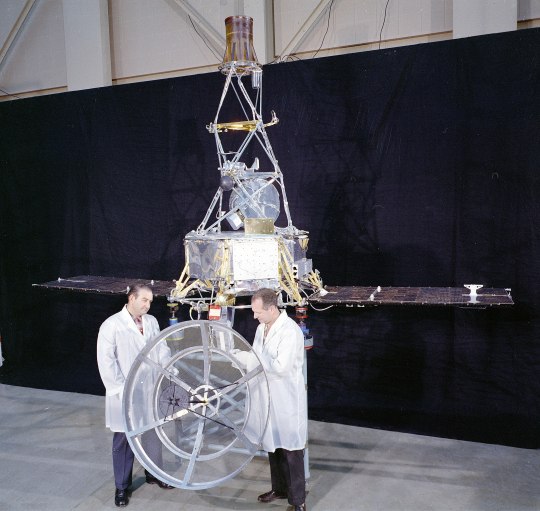
The name of the Mariner program was decided in "May 1960-at the suggestion of Edgar M. Cortright" to have the "planetary mission probes ... patterned after nautical terms, to convey 'the impression of travel to great distances and remote lands.'" That "decision was the basis for naming Mariner, Ranger, Surveyor, and Viking probes."
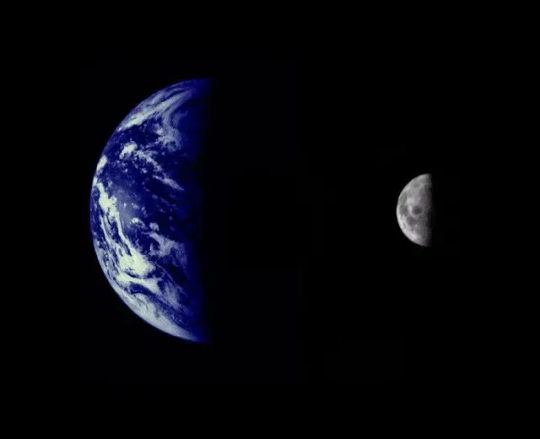
Each spacecraft was to carry solar panels that would be pointed toward the Sun and a dish antenna that would be pointed at Earth. Each would also carry a host of scientific instruments. Some of the instruments, such as cameras, would need to be pointed at the target body it was studying. Other instruments were non-directional and studied phenomena such as magnetic fields and charged particles. JPL engineers proposed to make the Mariners "three-axis-stabilized," meaning that unlike other space probes they would not spin.

Mariner 1 and Mariner 2
Mariner 1 and Mariner 2 were two deep-space probes making up NASA's Mariner-R project. The primary goal of the project was to develop and launch two spacecraft sequentially to the near vicinity of Venus, receive communications from the spacecraft and to perform radiometric temperature measurements of the planet. A secondary objective was to make interplanetary magnetic field and/or particle measurements on the way to, and in the vicinity of, Venus.
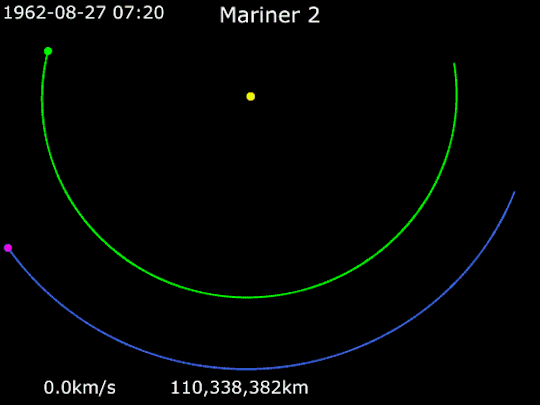
Animation of Mariner 2's trajectory from August 27, 1962, to December 31, 1962. Mariner 2 · Venus · Earth.
Mariners 3 and 4
Sisterships Mariner 3 and Mariner 4 were Mars flyby missions.
Mariner 3 was launched on November 5, 1964, but the shroud encasing the spacecraft atop its rocket failed to open properly and Mariner 3 did not get to Mars.
Mariner 4, launched on November 28, 1964, was the first successful flyby of the planet Mars and gave the first glimpse of Mars at close range
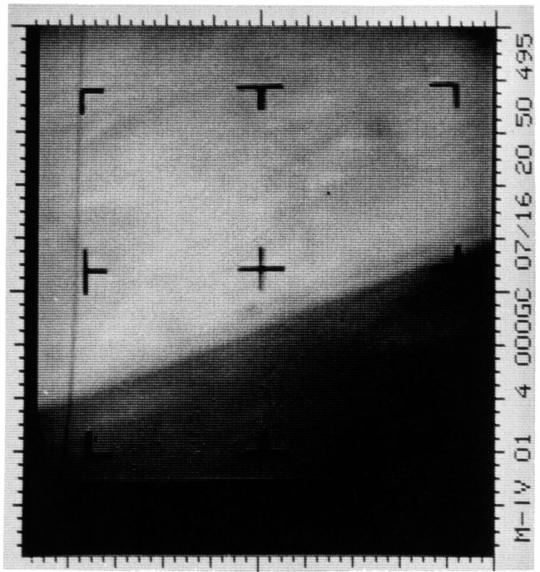
This archival image is an enhanced contrast version of the first Mars photograph released on July 15, 1965. This is man's first close-up photograph of another planet -- a photographic representation of digital data radioed from Mars by the Mariner 4 spacecraft. Data was either sent to Earth immediately for acquisition or stored on an onboard tape recorder for later transmission.
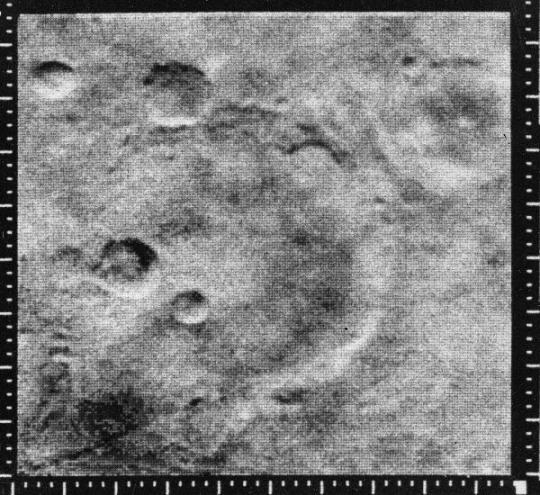
The pictures, played back from a small tape recorder over a long period, showed lunar-type impact craters (just beginning to be photographed at close range from the Moon), some of them touched with frost in the chill Martian evening.
Mariner 5
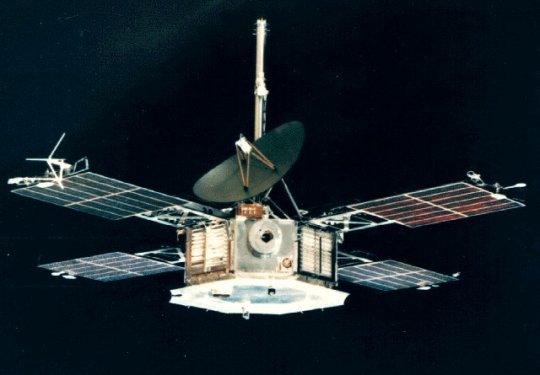
The Mariner 5 spacecraft was launched to Venus on June 14, 1967, and arrived in the vicinity of the planet in October 1967. It carried a complement of experiments to probe Venus' atmosphere with radio waves, scan its brightness in ultraviolet light, and sample the solar particles and magnetic field fluctuations above the planet.
Mariners 6 and 7
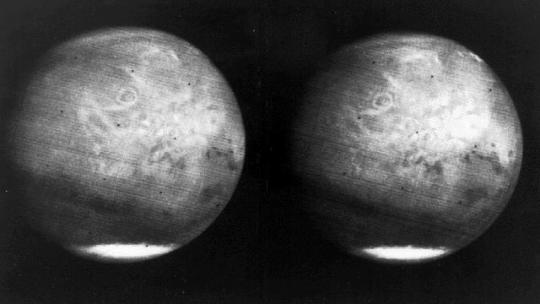
Mariners 6 and 7 were identical teammates in a two-spacecraft mission to Mars. Mariner 6 was launched on February 24, 1969, followed by Mariner 7 on March 21, 1969. They flew over the equator and southern hemisphere of the planet Mars.
Mariners 8 and 9
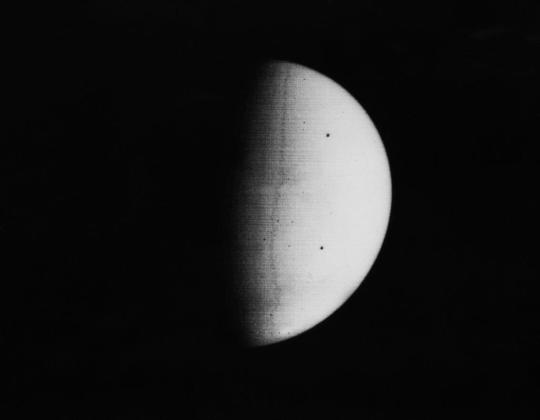
Mariner 8 and Mariner 9 were identical sister craft designed to map the Martian surface simultaneously, but Mariner 8 was lost in a launch vehicle failure. Mariner 9 was launched in May 1971 and became the first artificial satellite of Mars.
Mariner 10
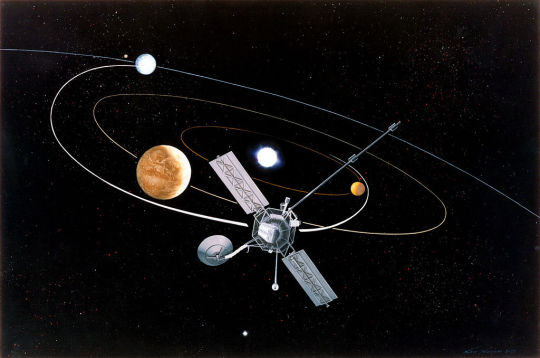
The Mariner 10 spacecraft launched on November 3, 1973, and was the first to use a gravity assist trajectory, accelerating as it entered the gravitational influence of Venus, then being flung by the planet's gravity onto a slightly different course to reach Mercury. It was also the first spacecraft to encounter two planets at close range, and for 33 years the only spacecraft to photograph Mercury in closeup.
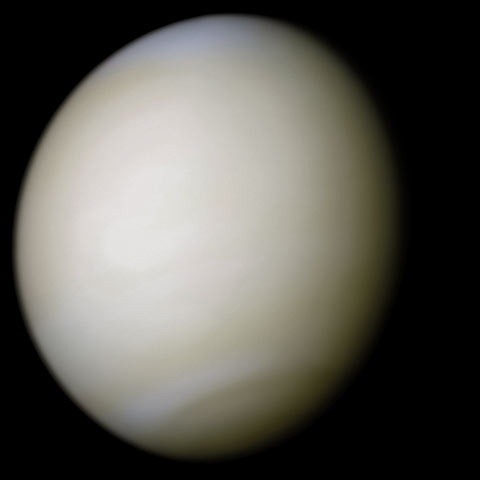
Venus in real colors, processed from clear and blue filtered Mariner 10 images
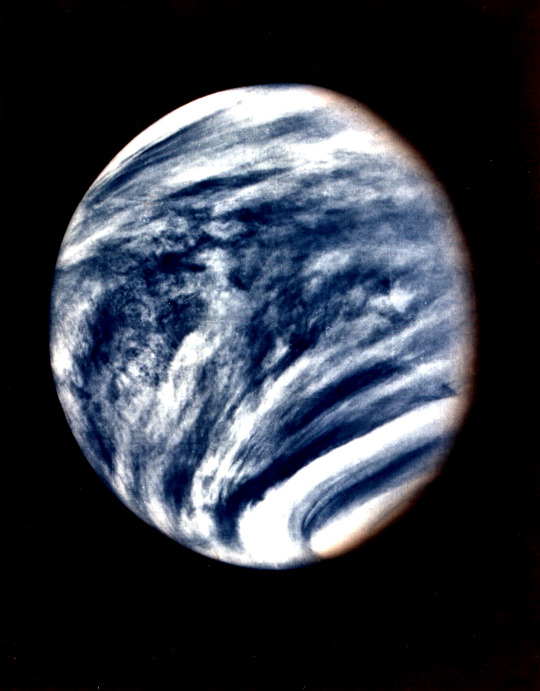
Mariner 10's photograph of Venus in ultraviolet light (photo color-enhanced to simulate Venus's natural color as the human eye would see it)
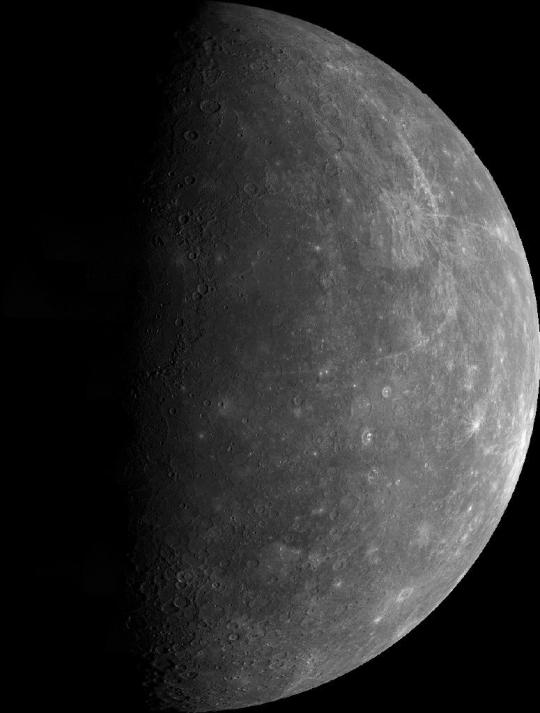
This mosaic shows the planet Mercury as seen by Mariner 10 as it sped away from the planet on March 29, 1974.
source x, x | images x
#mercurio#mercury#venus#mars#marte#astronomy#astronomia#space#solarsystem#sistemasolar#universe#universo#mariner#mission#space exploration
267 notes
·
View notes
Text

Saw a viral tweet and got some Star Trek inspiration
#star trek#star trek lower decks#incorrect star trek quotes#mariner#beckett mariner#lower decks#meme#meme made
163 notes
·
View notes
Text




I felt like a mere video clip could not do the scene justice. I am incredibly proud of the second and third GIFs, thank you very much.
#star trek#lower decks#star trek lower decks#lwd#st lwd#stlwd#star trek spoilers#lower decks spoilers#star trek lower decks spoilers#lwd spoilers#st lwd spoilers#stlwd spoilers#mariner#beckett mariner#rutherford#samanthan rutherford#tendi#d’vana tendi#boimler#bradward boimler#caves#gifs#gifset
666 notes
·
View notes